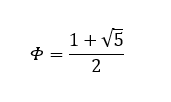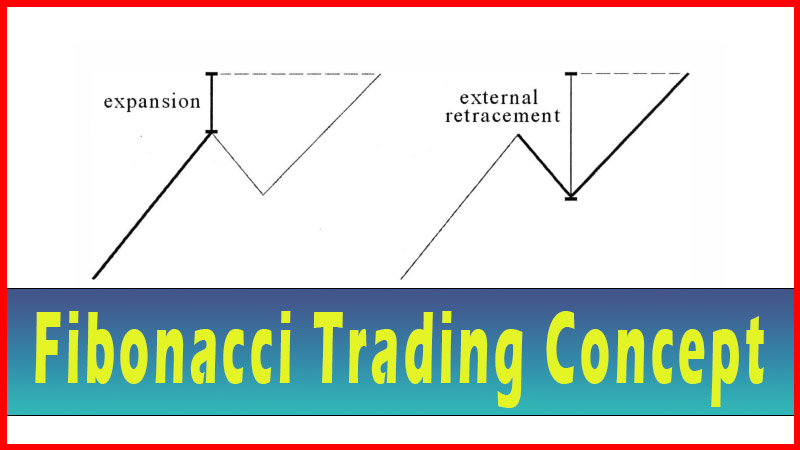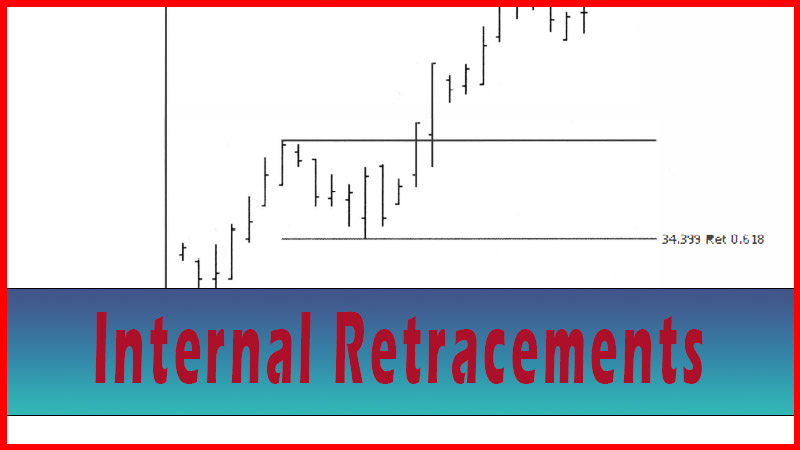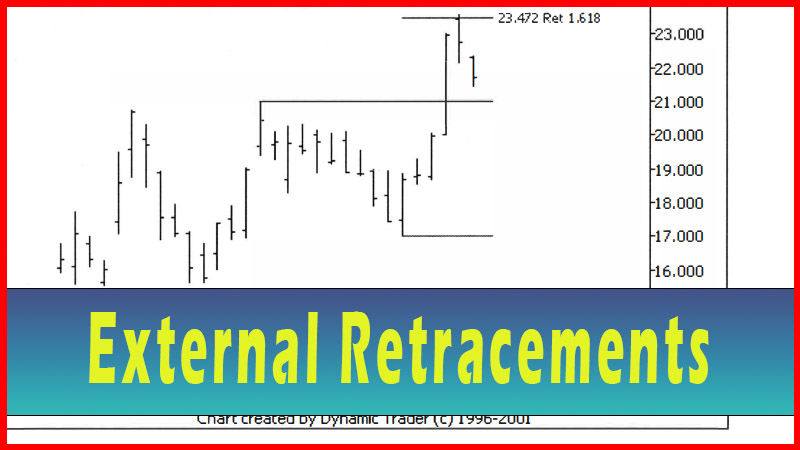Basic Concept of Fibonacci
Internal Retracements, External retracements, Fibo Expansions, Fibonacci Retracements
Course: [ Advanced Fibonacci Trading Concept : Basic Concept of Fibonacci ]
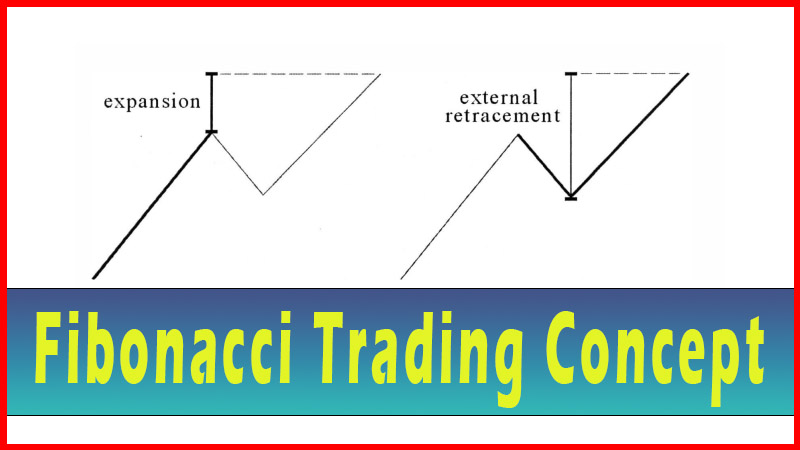
The most basic Fibonacci number is denoted as Phi (Φ), the ‘Golden Ratio’. It has a rounded value of 1.618.
Basic Concept of Fibonacci Trading
Strategy
In writing this book I assumed that the reader has
a fairly good knowledge of the Fibonacci numbers, and of the concepts of using
Fibonacci in trading the markets. Nonetheless, I’m going to do a little review
here in Chapter 1, just to refresh some of the ideas I’ll be building on later
with the more advanced concepts. I’ll refrain from the detailed derivations of
the number series and refer the reader to one of my introductory books on the
subject, or to the many library and Internet references on the subject.
The most basic Fibonacci number is denoted as Phi
(Φ), the ‘Golden Ratio’. It has a
rounded value of 1.618. For those that like the mathematics behind this, you
can get the exact value from this equation:
The ratio 1.618:1 is pervasive all throughout the
natural world. In studies on beauty performed across many cultures, the closer
the different proportions of the face were to this ratio, the higher was the
level of perceived beauty. If people are asked “which rectangles are the most
pleasing to the eye”, the most preferred rectangular shape will have its longer
side 1.618 times the length of its shorter side. The examples are endless. For
those like myself who never tire of this, there are plenty of books available
at the local library, not to mention resources on the Internet.
In my early days of exploring Fibonacci numbers, I
was also fascinated with pi (π), the constant determined by dividing the
circumference of a circle by its diameter. As we will see in a later chapter,
pi can be used as an extreme external retracement for trading purposes. I was
constantly thinking that pi and Phi must be related somehow, although I
couldn’t begin to guess how two irrational numbers such as these could be
joined in any kind of formula. Lo and behold, one day I found a reference to a
mathematical proof that linked the two together into one complex formula. That
was enough to solidify the concept, for me, that there was more going on in
nature than meets the undiscerning eye.
Let’s look at the most commonly used Fibonacci
numbers when it comes to trading. We already have Phi, the ‘golden ratio’,
1.618. We can derive many, many more numbers directly from this. For example,
we can do the reciprocal, that is, flip 1.618 over, and we have .618. The .618
is denoted as phi (Φ) with a lowercase p in ‘phi’, as well as with the
lowercase Greek letter Φ. This is, perhaps, the number that is the most
well-known to the average person. Another example is to take the square roots
of these two numbers, producing .786 and 1.272.
These four numbers, .618, .786, 1.272, and 1.618,
are the ‘basic four’, the key numbers that most traders watch. Next, there is a
lot of reference in the trading literature to .382. One of the nearly endless
numbers of fascinating things about these Fibonacci numbers is how many
different ways they can be derived from each other. So how can we get the .382?
We can square .618 and we get .382. Or we can subtract .618 from 1 and get
.382. There are other ways, but it’s sufficient to say you can spend many a rainy
afternoon just finding new relationships and derivations if you are so
inclined.
The last of the common numbers you see being used
for trading, or cited in the literature, are .500, 1.000 and 2.000. While none
of these are ‘true’ Fibonacci numbers, they are used extensively in trading.
The .500 would be the so-called ‘50% pullback’ or ‘50% retracement’. The 1.000
would correspond to the ‘double top’ or ‘double bottom’. These numbers will be
included in the series I will build upon. In a later chapter, I will show that
there are actual Fibonacci numbers (i.e., numbers derived directly from Phi)
that are very close to these numbers. To the best of my knowledge, the
introduction of these numbers in the context of trading will be a first.
This leaves the series that we will begin to work
with at:
.382, .500, .618, .786, 1.000, 1.272, 1.618,2.000
While this may seem like a lot of numbers, most
modern-day charting software allows all these and more to be pre-set, making
their use quick and easy.
Advanced Fibonacci Trading Concept : Basic Concept of Fibonacci : Tag: Fibonacci Trading, Forex : Internal Retracements, External retracements, Fibo Expansions, Fibonacci Retracements - Basic Concept of Fibonacci
